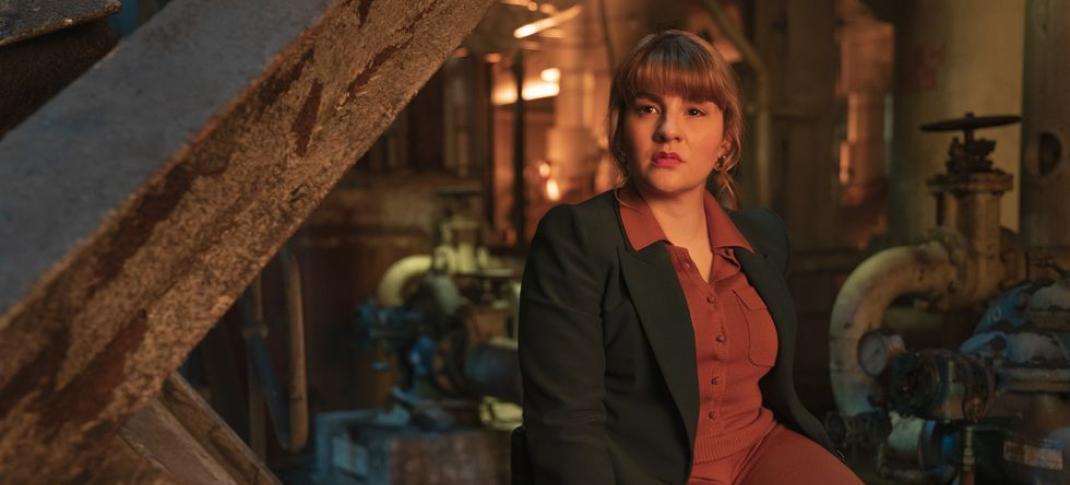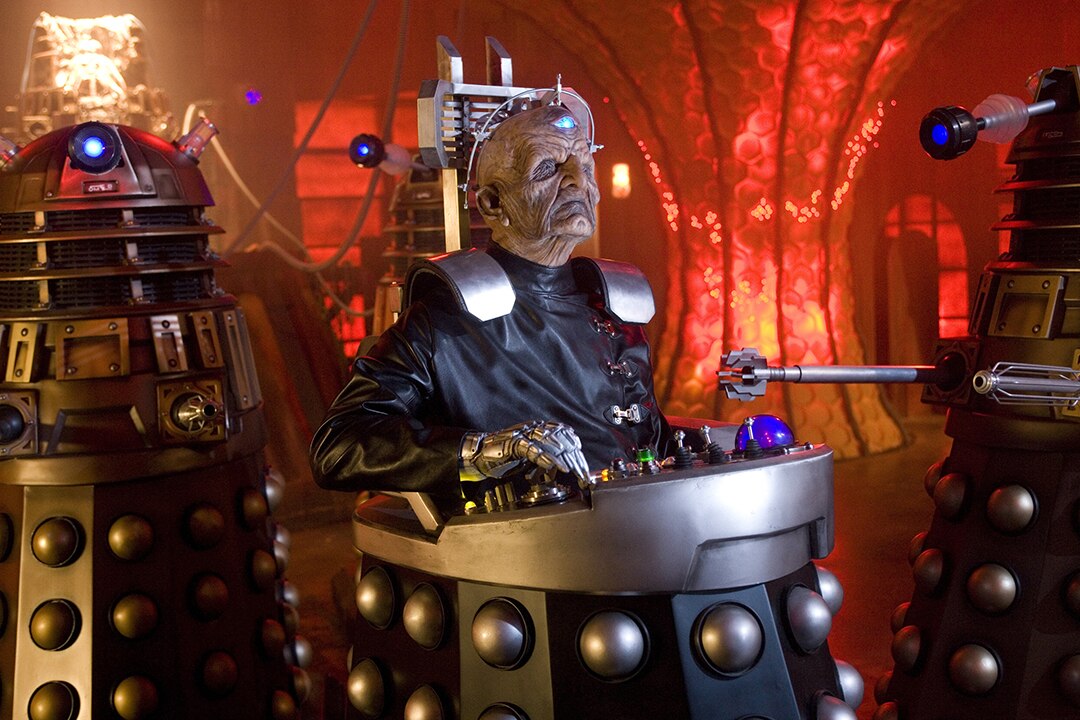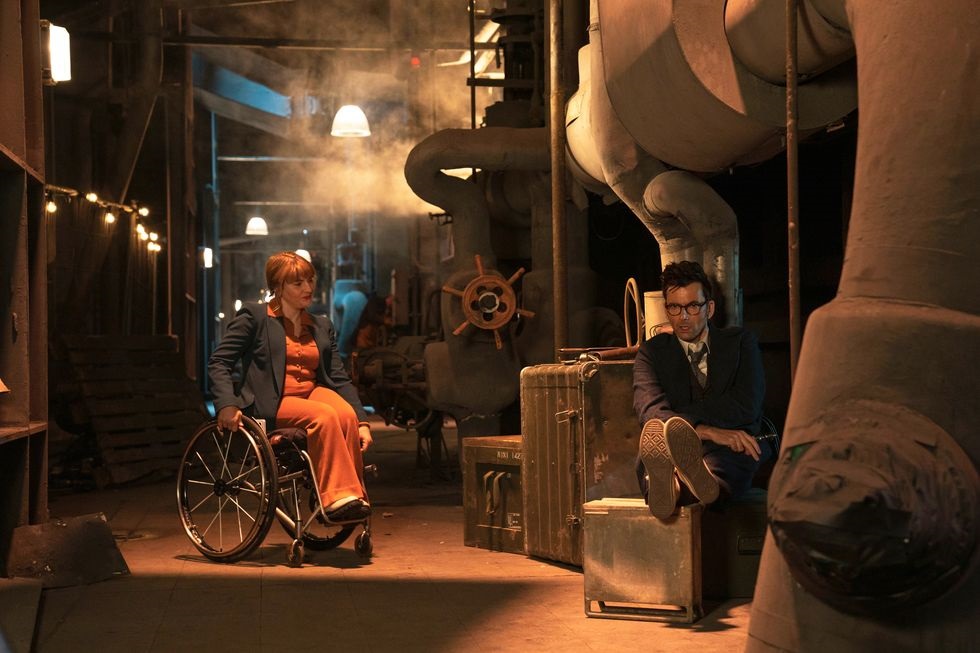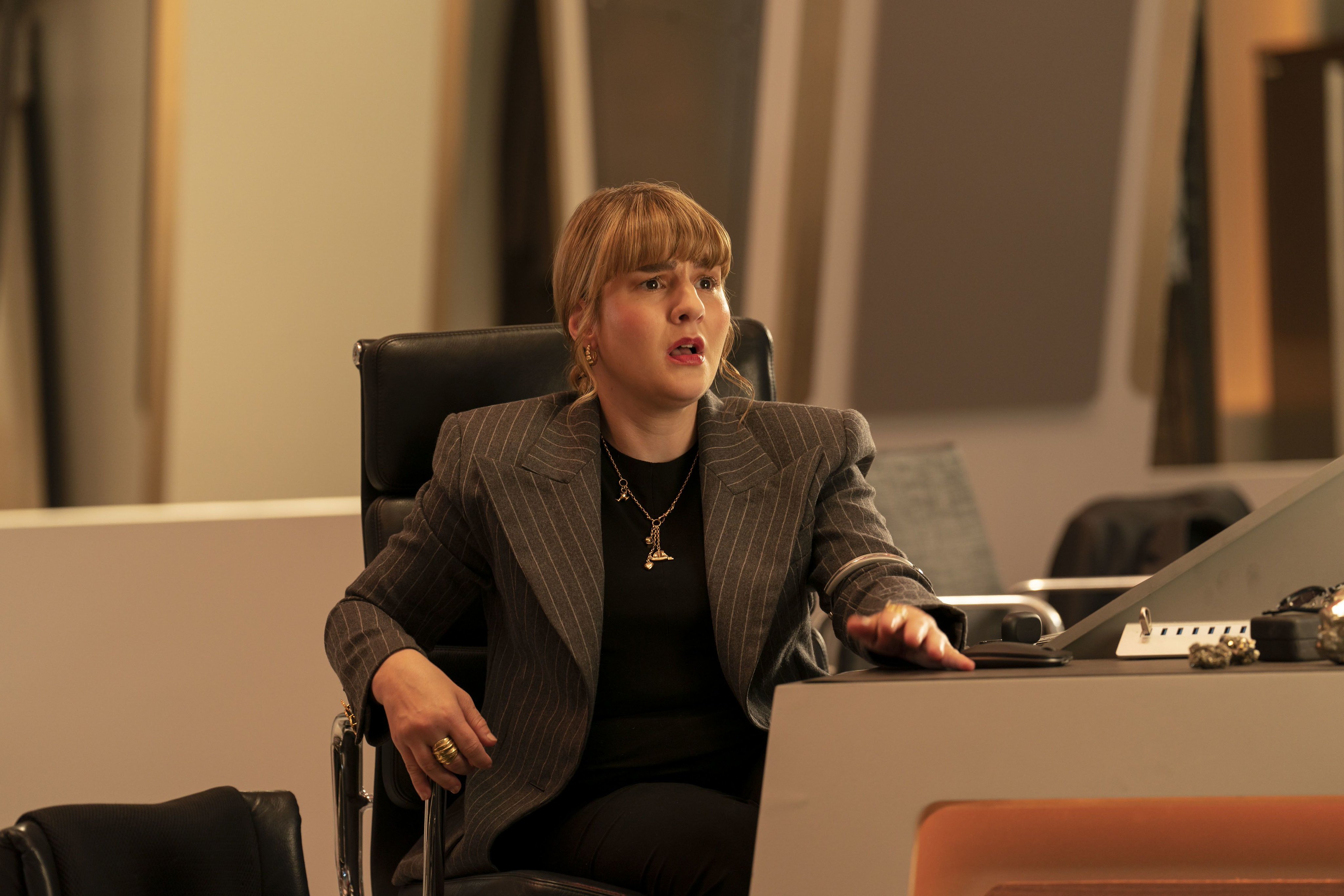'Doctor Who' Rolls into a New Era of Disability Representation

Ruth Madeley guest stars as UNIT scientific advisor Shirley Anne Bingham in the Doctor Who 60th anniversary specials.
Alistair Heap/BBC
Doctor Who’s 60th anniversary celebrations have come and gone, with the three anniversary episodes shaking up the show’s canon and leaving the door wide open for a brand-new era of the Whoniverse. Returning showrunner Russell T. Davies is back in full force with a clear goal of righting past wrongs and moving the show into the future. In just three episodes, he has attempted to remedy Donna Noble’s lack of agency, address the racist origins of the classic villain the Toymaker, and prove definitively that trans kids can save the world. Perhaps the most unexpected stop on the Davies redemption tour is a topic that has been long overlooked: disability representation.
The show has taken small steps towards more disability inclusion in recent years, with a handful of disabled guest stars playing disabled characters, like Cas (Sophie Stone) in "Under the Lake” and “Before the Flood,” Erica (Rachel Denning) in "The Pyramid at the End of the World,” and Diane (Nadia Albina) in “Flux.” In the new era of Doctor Who, Davies has made it abundantly clear that disability belongs in the Whoniverse.
Davies’ first move towards disability representation came before the specials even began, when David Tennant’s Fourteenth Doctor was introduced in a minisode for the Children in Need telethon alongside recurring villain Davros (Julian Bleach). Davros, however, has had a bit of a makeover.
Davros was first introduced in 1975 as the creator of the Daleks and depicted as a gnarled and scarred humanoid-Dalek hybrid, with the lower half of his body encased in a rolling Dalek-shaped shell. Regardless of the intents of the original character design, Davros’s Dalek contraption looks not unlike a wheelchair. This similarity could be overlooked if it wasn’t for its place in a long pattern in media: disability as a shorthand to dehumanize villains. Davros isn’t alone—the trope of the disabled villain is all over media, from Peter Pan’s Captain Hook to Dr. Strangelove’s titular character. Just two of many examples from Davies’ first stint as Doctor Who showrunner are Max Capricorn (George Costigan) and Jon Lumic (Roger Lloyd Pack), evil genius billionaires on life-support systems whose disabilities serve two purposes: to motivate their evil deeds and make them appear unsettling.
The new Davros appears out of his Dalek contraption, nefarious as ever but without the implied wheelchair. The character’s change in appearance could be explained away in a hundred different ways (this is a show whose protagonist routinely changes bodies, after all). But Davies decided to address the change head-on in Doctor Who’s behind-the-scenes aftershow, Doctor Who Unleashed. About the change he said, “Time and society and culture and taste has moved on, and there’s a problem with the Davros of old, in that he’s a wheelchair user who is evil. And I had problems with that... of associating disability with evil. And trust me there’s a very long tradition of this... When the world changes, Doctor Who has to change as well... I say, this is how we see Davros now.”
Viewers’ response to the Davros redesign was, in a word, appalling, ranging from laments that the redesign is part of Davies’ “woke agenda” to doubts that the disabled villain trope even exists in media at large. But for those who have long been frustrated by this trope, Davies’ course-correction was a breath of fresh air.
The Davros redesign may have been a surprise, but disabled fans have been looking forward to new representation in Doctor Who since actor Ruth Madeley was first seen in a trailer for the 60th anniversary specials in 2022. Madeley is an accomplished actor and disability activist playing the role of Shirley Anne Bingham, a scientific advisor for UNIT. Madeley, who uses a wheelchair, has an impressive resume of playing nuanced disabled characters and advocating for better disability representation in the media. Madeley’s character Shirley is introduced in “The Star Beast” as a no-nonsense officer with a rocket-launching wheelchair and a penchant for bantering with the Doctor. It would have been easy for the often-fantastical show to write around her wheelchair or give her magical powers to circumvent any obstacles, but Davies does not shy away from the fact that Shirley is a disabled person in an inaccessible world. When faced with a flight of stairs, she tells her troops, “Don’t make me the problem, just get in there.” The line could seem heavy-handed, but her blunt delivery underscores what disabled people experience in the real world: being made to feel like a burden when the real burden is inaccessibility.
The biggest statement Shirley makes in “The Star Beast” isn’t spoken at all. It’s a tiny, blink-and-you'll-miss-it gesture: she crosses her legs. For disabled fans, it was the leg cross heard ‘round the Internet. It is a common misconception that all wheelchair users have no ability to move their lower body, and ambulatory wheelchair users often face scrutiny and suspicion for using their legs. Shirley’s leg cross was a joyous moment of on-screen representation for many, but caused consternation for people who held those misconceptions.
Almost as if Davies had anticipated this reaction, he wrote a response to this form of ableism into the third special, “The Giggle.” Head of UNIT Kate Stewart (Jemma Redgrave), under the influence of an artificial paranoia, confronts Shirley.
“What are you hiding? And as for her in that chair, I’ve seen you walk. I’ve seen you walking. Don’t deny it!”
This moment lays bare the judgement that not only wheelchair users, but all disabled people face when other people’s biases don’t align with the reality of their disabilities. It also paints ableism as just as sinister as the rest of Kate Stewart’s raging conspiracies.
Most of Shirley’s appearances on screen are coupled with a little teachable moment like this, some subtle, some not-so-subtle (let’s face it, subtle has never been Davies’ forte). Some of the dialogue bends towards overly expository, but it’s also realistic. Disabled people spend much of our time explaining ourselves and educating others, and we don’t shy away from discussing disability.
The specials closed out with a triumphant moment that would change the Whoniverse forever. No, not the bi-generation, the reveal of a wheelchair ramp in the TARDIS. Is it the bare minimum? Yes. Is it a bit of back-patting from Davies? Also yes. Is it an enormous and meaningful moment for disability inclusion on Doctor Who? Absolutely. In a behind-the-scenes segment, Madeley spoke to the importance of the ramp:
“When Russell told me that we were putting a ramp in the TARDIS I cried... I know what that will mean for the disabled community and many disabled Whovians who haven’t had that. That’s the first time the TARDIS has been wheelchair accessible.”
Shirley gets to see the ramp but doesn’t use it, which seems like an assurance that this new fan-favorite character will be back to make full use of it in the future.
“The Future is Accessible” is a slogan coined by disability activist Annie Segarra, inspired by the feminist “The Future is Female” slogan of the 70s and spurred by the imperative to include disabled people when imagining a more equitable future. Russell T. Davies is imagining it alright, and across the Whoniverse, the future really is accessible.







